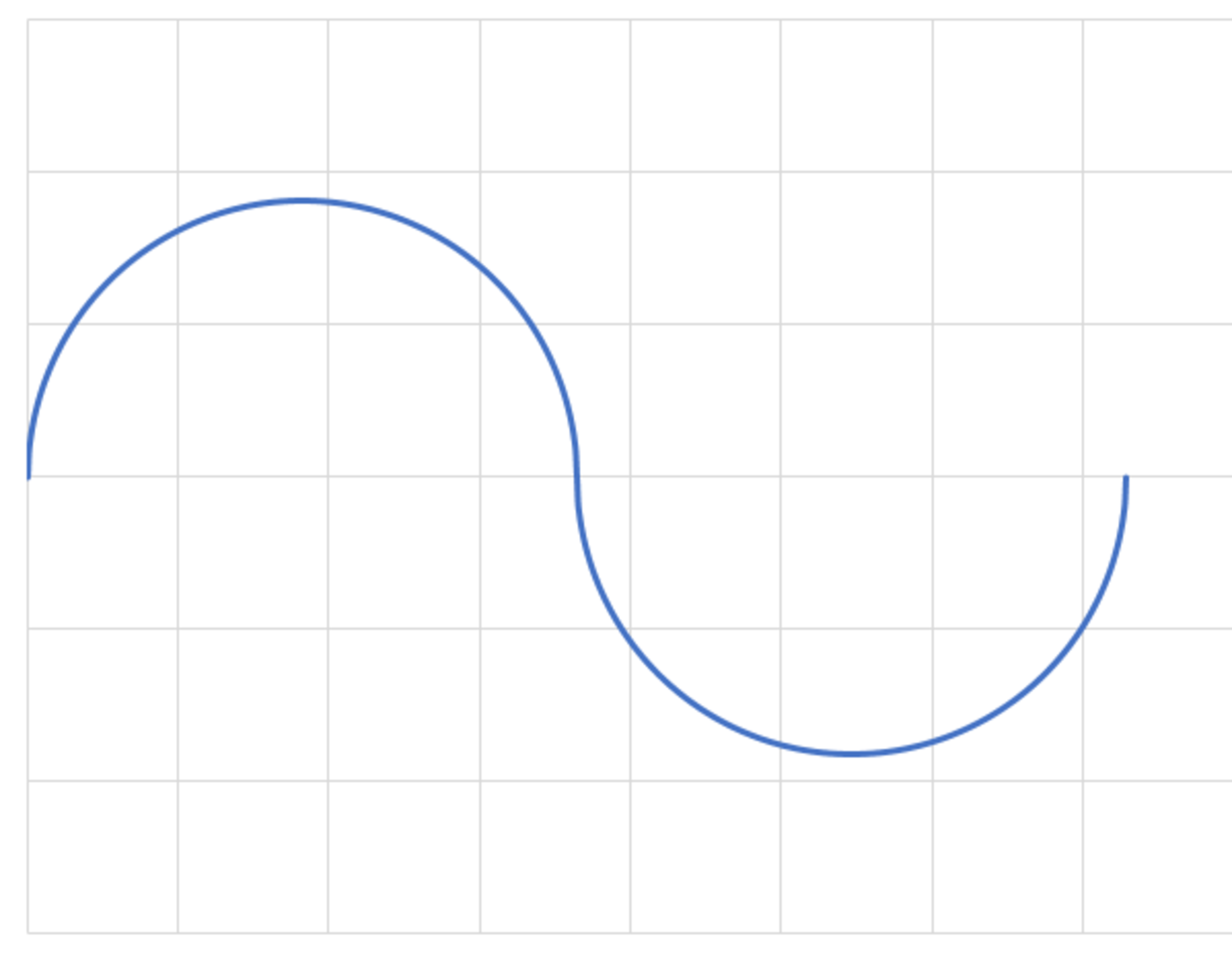Semi-circular Sine Wave Substitute
It is common knowledge that for a sine wave, the ratio of the peak value to the root mean square (RMS) value is . Suppose we construct a periodic signal resembling a sine wave, composed of half circles placed end to end, with oscillating polarity.
For this signal, the ratio of the peak value to the RMS value is:
If and are positive co-prime integers, determine .

The answer is 5.
This section requires Javascript.
You are seeing this because something didn't load right. We suggest you, (a) try
refreshing the page, (b) enabling javascript if it is disabled on your browser and,
finally, (c)
loading the
non-javascript version of this page
. We're sorry about the hassle.
The radius of the circular waveform is one-fourth the time period of the wave, hence T = 4 R . The circular waveform in terms of cartesian coordinates x and y can be given by
y 2 + ( x − R ) 2 = R 2 , 0 ≤ x ≤ 2 R y 2 + ( x − 3 R ) 2 = R 2 , 2 R ≤ x ≤ 4 R
Thus the RMS value for the wave can be given as
RMS value = 4 R 1 ∫ 0 4 R y 2 d x = 4 R 1 [ ∫ 0 2 R ( R 2 − ( x − R ) 2 ) d x + ∫ 2 R 4 R ( R 2 − ( x − 3 R ) 2 ) d x ] = 3 2 R
while the peak value is simply R . Thus required ratio is 2 3 giving the answer as 5 .